After more than a year of preparation, Ohio University’s Team Gravitron plants-and-gravity experiment launches for the International Space Station this week aboard a SpaceX Falcon 9 rocket.
As the Falcon blasts off at the Kennedy Space Center in Cape Canaveral, FL, the Ground Control Team at Ohio University in Athens, OH, will launch a Falcon 9 replica complete with a payload of mustard-sized seeds—and then prepare for the ground control experiments in the Wyatt Lab in Porter Hall.
The Athens launch is open to the public, starting at 2 p.m. on Tuesday, Dec. 16, in Bicentennial Park (next to Walter Hall), with local liftoff at 2:30. The Athens Ground Crew of undergraduate students will be on hand to display the ground control and discuss the experiment.
The Kennedy launch, scheduled for Tuesday, Dec. 16, but has been delayed to Friday, Dec. 19. but the Athens launch still will take place on Tuesday, Dec. 16.
Dr. Sarah Wyatt, Professor of Environmental & Plant Biology and principle investigator on the project, will be at Kennedy preparing the canisters that will fly as well as the ground control experiment at Kennedy. She will call in to the simultaneous Athens launch. (She will be available to talk to reporters by mobile phone at 740-707-3201.)
Ohio University’s mascot Rufus also is making the trip to the space station, nestled into a tiny container of Wyatt lab mementos. He will spend Christmas and New Year’s orbiting the Earth.
How Do Plants Know Which Way is Up?
Gravity. Not the sun. Plants do not grow “up” because they are attracted to sunlight. They grow up because they are responding to gravity.
On the International Space Station, Wyatt’s Arabidopsis thaliana seeds will germinate and grow in the dark. A control lab at Kennedy will mirror the space conditions—with gravity as the only variable. (Plus two ground controls at OHIO.)
When seedlings germinate in the soil, gravitational signaling tells them which way to grow, and it was that gravitropic signaling that Wyatt began exploring about 15 years ago. At that time, scientists knew almost nothing about how plants “signaled” gravity. Now hers is one of only a few labs in the world—including one in Wisconsin and one in Japan—studying how plants respond to gravity.
Launch T-Minus…
Count down the time to launch and sign up for email launch alerts https://www.kennedyspacecenter.com/events/2014/december/launch-falcon9-crs5.aspx.
- Saturday, Dec. 13: Wyatt and graduate students Proma Basu and Marilyn Hayden (of Logan, OH) are at Kennedy Space Life Sciences Laboratory preparing the seeds for launch. BRIC 20 (NASA’s biological research in canister). BRIC 20 will be in cold storage until 3 p.m on Sunday to prevent germination. (4 canisters, 22 petri dishes, more than 12,000 seeds will fly.)
- Sunday, Dec. 14: The samples for BRIC 20 are integrated into the hardware, the Petri Dish Fixation Unit (PDFU) and then placed in a cold bag. (Temperature (4 C). This is known as “integrating the science.”
- Tuesday, Dec. 16: Launch of SpaceX Commercial Supply Services Flight with Cloud-Aerosol Transport System (SpaceX CRS-5) from Cape Canaveral Air Force Station, Florida. SpaceX CRS-5 will deliver cargo and crew supplies to the International Space Station, as well as Team Gravitron’s Arabidopsis thaliana seeds.
- Thursday, Dec. 18: Dock with International Space Station. Astronauts remove BRIC 20 from the cold bag. Seeds will then germinate, and the seedlings will grow for three days.
- Monday, Dec. 22: Astronauts will accuate fixative to stop plant growth.
- Tuesday, Dec. 23: BRIC 20 placed into freezer (-80 C)
- Friday, Jan. 23: Return and landing
- Wednesday, Jan. 28: Deintegration of the science. BRIC 20 will be shipped to Ohio University.
- Thursday, Jan. 29: Arrival of BRIC 20 to Ohio University, Athens, OH.
Team Gravitron
Ground Team at Ohio University (undergraduates)
- Colin Kruse – Mission control
- Adam Cook – Model rocket specialist
- Zak Hall – Payload specialist (seed he grew and collected will actually be flown to International Space Station and we will have a small payload on the model)
- Megan Osika – Payload support
Hall grew and collected the seeds that will actually fly, and he has been to Kennedy during pre-flight preparation.
Kruse will be planting two ground control BRICs at the Wyatt Lab. OHIO coffee mugs will serve as the simulated BRICs in Athens, and another ground control will take place at Kennedy. The ground controls will be time delayed in order to simulate the temperature and conditions on the space station.
Kennedy Space Center Team
- Dr. Sarah Wyatt, Principle Investigator and Professor of Environmental & Plant Biology at Ohio University
- Dr. Darren Luesse, Principle Investigator and Associate Professor of Biological Sciences at Southern Illinois University Edwardsville.
- Proma Basu, M.S. in Plant Biology student at Ohio University
- Marilyn Hayden, M.S. in Plant Biology student at Ohio University
- Sarah Hutchinson, M.S. in Biological Sciences at SIUE
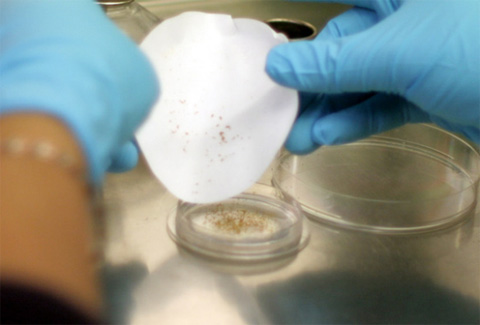
Graduate researcher, Proma Basu, plates seeds in preparation for placement into a simulated BRIC environment. For the space-flown experiment, each plate contains 800 seeds.
Ready for the Science
Wyatt’s NASA-funded experiment “Proteomics Analysis Of Arabidopsis Seedlings In Microgravity” is one of nine space flight experiments in the “Research Opportunities in Space Biology” program investigating questions about how cells, plants and animals respond to changes in gravity.
Future long-duration space missions will rely on plants for food supplies, oxygen and a pleasant reminder of Earth.
“Healthy plant growth will be a critical component of extended space flight,” says Wyatt. “Plants provide a renewable source of both oxygen and food, as well as aesthetic benefits. By understanding how plants respond to microgravity, it may be possible to both tailor the environment to promote growth as well as genetically engineer plants that can better tolerate the space environment.”
“Understanding how plants grow and develop in space provides critical information about how they use gravity as a signal when grown on earth,” Wyatt adds. “This is critical because gravity is a constant stimulus that affects plant growth from the direction of seedling emergence after seed germination to the positioning of flowers for pollination and seeds for dispersal. One goal of this project is to identify individual proteins that plants use to sense and respond to gravity. Future alterations to these proteins in crop species, through environmental changes or genetic engineering, could have dramatic impacts on agricultural output.”
Read ‘Ready for the Science’—Destiny Awaits for more about Wyatt’s attraction to space and the Destiny science module on the International Space Station.
Spot the Station
The International Space Station is the third brightest object in the night sky and can be easily seen with the naked eye. To know when to look up to spot the station based at your location, sign up for alerts from NASA here: http://spotthestation.nasa.gov/.
The back-up dates for the Kennedy launch are Dec.19, 23 and 26. The Athens launch will take place on Dec. 16 rain or shine.


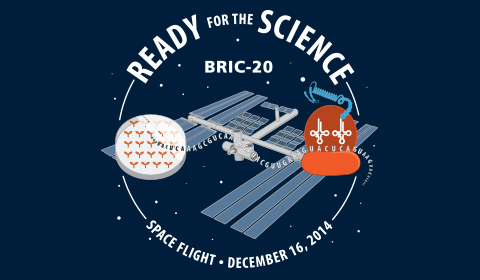
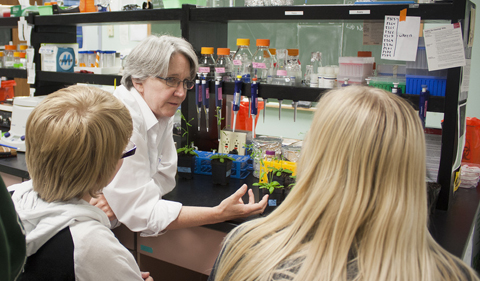
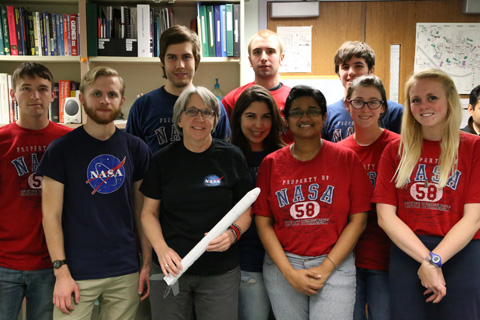




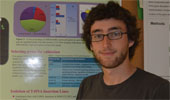













One Comment